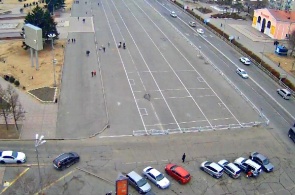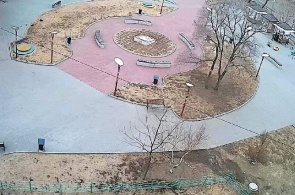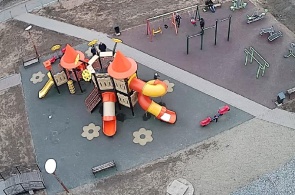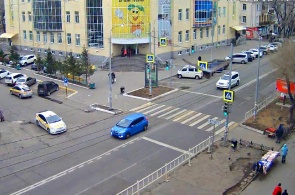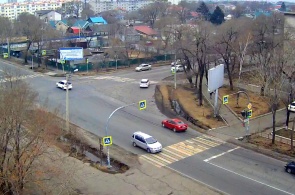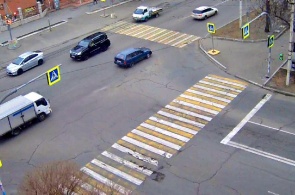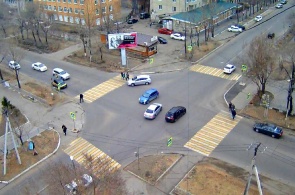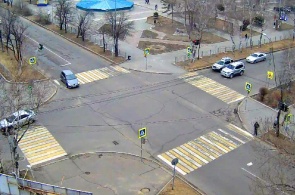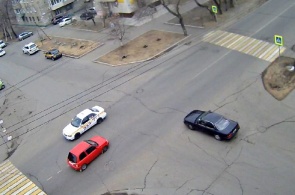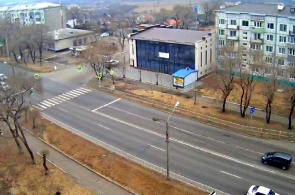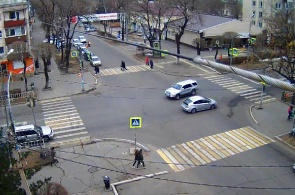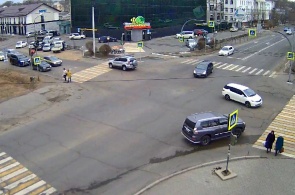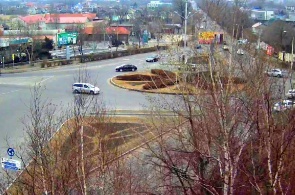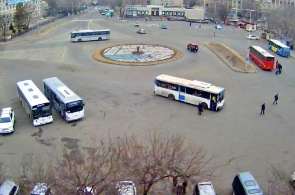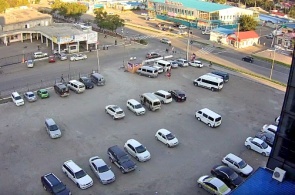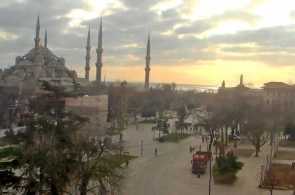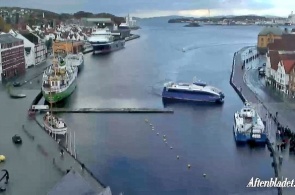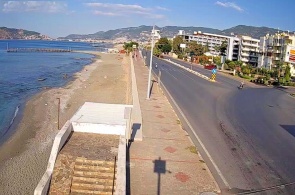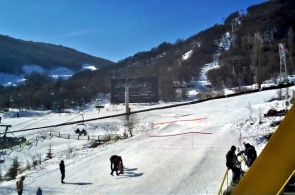The history of the street, called Zanadvorovka (now Chicherin), which became the control center of the Ussuri region, has begun so. In 1882 the city of Kamen-Fisherman in the village of Nikolskoye, was transferred to the police Department Couponscom district, which was in charge of all matters of life in the new South-Ussuri Krai from construction of roads, schools, churches, hospitals, to settling the newly arrived peasants, supply them with agricultural implements, seeds, loans. It is easy to imagine as soon perked up this part of the village. Here began to come together the control of all the vast South-Ussuri Krai. One of the most striking architectural monuments of the street is the building of Nikolsk-Ussuriysk girls ' school, built in 1906 by municipal architect D. V. Shabalin. Imposing structure of red brick, the design of which used elements of Russian style that attracts attention. Another notable monument street Chicherina – shopping-cooking school (building No. 52). On the even side of the street, near the intersection with the street Khabarovsk (Lenin) was opened in the hotel "Paris". No. 18 (modern numbering) is a land-vowel city Duma F. F. Bakalov. The hotel "Ussuri" was founded in 1935 for the project Christine (Institute Dlprager in Khabarovsk). The building it was very slow, the construction is several times preserved. Only in 1954 in the city there was finally a modern hotel. Church of the intercession. In 1871 its place was first Nikolsk-Soulfunky wooden Church, which, in 1895, added two wooden bell tower, the porch, and the iconostasis. In 1900, the wooden structure fell into disrepair, and only in 1914 this place was begun the building of the present stone Church, then assigned to great St. Nicholas Cathedral. For almost 20 years (from 1927 to 1946), the Temple of the Holy virgin was inactive. The temple was founded by the writings of Abbot Nicholas Cathedral Archpriest O. Paul. Church of the intercession was consecrated on 28 September 1914 the Vladivostok Bishop Esaiam. The Church has two altars – the main one, in honor of the Holy virgin, and the second – in the name of Paul Thebes. After the establishment of Soviet power in 1922, the Church worked for several years, however, it soon became the question of its development.
More details
A web camera transmits real-time Central square on Nekrasova street in the city of Ussuriysk Primorsky Krai.
Ussuriysk, Russia
21.04.19
A web camera transmits in real time the street Stakhanov in the town of Ussuriysk Primorsky Krai.
Ussuriysk, Russia
21.04.19
A web camera transmits real-time Park on the street Stakhanov in the town of Ussuriysk Primorsky Krai.
Ussuriysk, Russia
21.04.19
A web camera transmits in real-time the intersection of Nekrasov and proletarian in the city of Ussuriysk Primorsky Krai.
Ussuriysk, Russia
16.04.19
A web camera transmits in real-time the intersection of Nekrasov and Komarova in the city of Ussuriysk Primorsky Krai.
Ussuriysk, Russia
16.04.19
A web camera transmits in real-time the intersection of Nekrasov and Ageeva in the city of Ussuriysk Primorsky Krai.
Ussuriysk, Russia
16.04.19
A web camera transmits in real time a crossroads of streets Komsomol and Sovetskaia the city of Ussuriysk Primorsky Krai.
Ussuriysk, Russia
14.04.19
A web camera transmits in real-time the intersection of ulitsa Lenina and ulitsa Sukhanova in the city of Ussuriysk Primorsky Krai.
Ussuriysk, Russia
14.04.19
A web camera transmits in real-time the intersection of Plekhanov and Gorky in the city of Ussuriysk Primorsky Krai.
Ussuriysk, Russia
14.04.19
A web camera transmits in real-time the intersection of the Vladivostok highway and street Krylova in the city of Ussuriysk Primorsky Krai.
Ussuriysk, Russia
13.04.19
A web camera transmits in real-time the intersection of Nekrasov – Pushkin in the city of Ussuriysk Primorsky Krai.
Ussuriysk, Russia
13.04.19
Webcam broadcasts in real-time the intersection of Nekrasov - the Komsomol in the city of Ussuriysk in Primorsky Krai
Ussuriysk, Russia
06.04.19
Webcam broadcasts in real-time the intersection of the red banner - Pushkin in the city of Ussuriysk Primorsky Krai.
Ussuriysk, Russia
06.04.19
Web Cam broadcast Station Square in the city of Ussuriysk, Primorsky Krai. Ussuriysk is one of the main cities of the Primorsk territory, the second in importance and population of the regional city after Vladivostok.
Ussuriysk, Russia
06.04.19
popular camerasshow all
Sultanahmet or Blue mosque is a work of art of Turkish-Islamic architecture. Its construction began in 1609, the construction work took seven years to a 19-year-old Sultan. The name of the mosque was, due to its interesting and unique finish.
Istanbul, Turkey
Stavanger, a town in the commune of Norway, located in the South-Western part of the country, on the Peninsula, rich in minerals. Tanager combines the influence of foreign organisations such as NATO and oil companies. The camera will shoot the harbour and the promenade of the city.
Stavanger, Norway
A webcam broadcasts the district of Tosmur - quiet location in the Eastern part of Alanya, located only five kilometres from the city centre. Its rural way of life and the beauty of untouched nature attract tourists.
Alanya, Turkey
Shark Island or in English of Shark island, located in the harbour city of Sydney, the suburb of Point Piper. The locals, the natives named the island Boambilly, which translated means Shark island. After all, this name is not casual, because it's mean and looks like a shark fin.
Sydney, Australia
The webcam is installed on site Alva. Tsaghkadzor ski resort town in Armenia. Tsaghkadzor is a beautiful mountainous area among deciduous forests, with a pleasant winter climate, and clean fresh air. The highest point is 1800 meters. The truss type is a classic, divided into three.
Tsakhkadzor, Armenia

